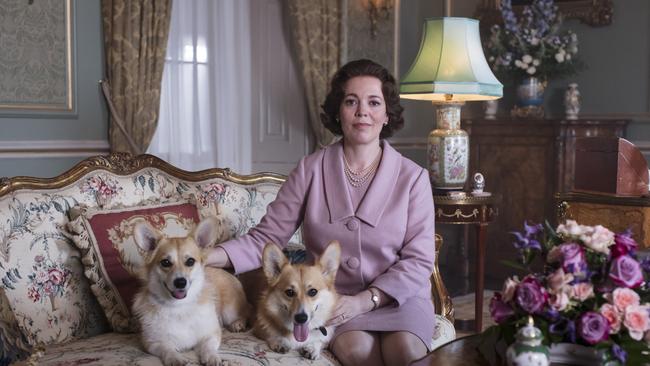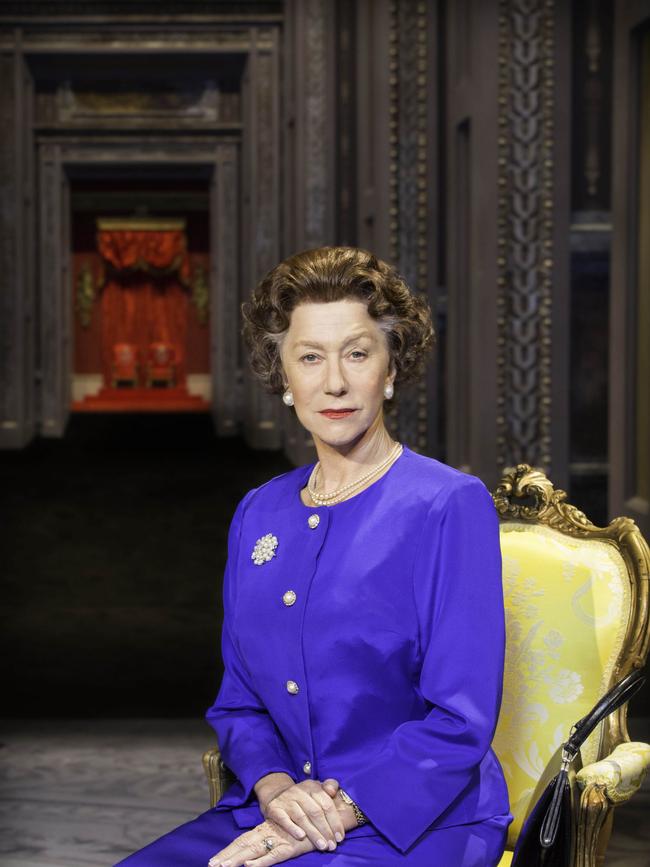The Queen on screen: we thought we knew her
The entertainment industry has long loved an invented character called Queen Elizabeth II, convincing audiences that they knew the monarch.

Whether it was the TV show The Crown, the play The Audience, the film The Queen or a raft of comic and satirical portrayals of her as the picture of stuffy aristocracy, screen and stage versions of the Queen have convinced audiences that they knew the monarch even as they understood that what they were watching was fiction.
Portraying the Queen, who died aged 96 last week, required accessing the interior world of a restrained public figure who at times seemed as knowable as a postcard picture. Yet pop culture is filled with layered portrayals by actors conveying emotion with gestures as subtle as a blink or a well-timed pause amid the drama.
“I don’t feel like I played The Queen. I know this sounds trite, but I feel like I played Elizabeth Mountbatten,” actor Claire Foy, who portrayed the young Queen in the hit Netflix show The Crown, told The Wall Street Journal magazine in 2019.
Depictions of the Queen became increasingly complex over the years as a spiral of palace crises led the public to view the royal family with less reverence, says Arianne Chernock, a Boston University history professor who specialises in the monarchy. The entertainment industry has mined the tensions between the Queen’s scripted public image and the upheaval and messiness of the royal family’s private lives, she says. “She is a cipher,” Chernock says. “Because we don’t have access to her inner life, these dramatisations are the only moments we have to dwell in the possibilities of what she might be thinking and feeling.”
That silence helped make the Queen an easy target of satire. British comic actors played her as a stand-in for class, colonialism and other hang-ups close to home. Tracey Ullman channelled the Queen’s mannerisms into a composite royal character who spoke with tight-mouthed condescension: “Interesting wine though,” she said in a sketch set at a subject’s home. “It manages to be bland and acid both at the same time.”

In the US, the caricature usually riffed on stereotypes about a rigid royal family. Saturday Night Live deployed Fred Armisen in drag to portray the Queen with a crass attitude and a tough cockney accent. “Drop the ‘Your Majesty’ crap,” he said to Anne Hathaway’s Kate Middleton in a 2010 sketch imagining the future duchess’s introduction to the queen.
Writing about the Queen offered an entry to key chapters of the 20th century. British playwright and screenwriter Peter Morgan explored the monarch’s encounters with a long line of prime ministers in his drama The Audience, which premiered in London’s West End in 2013 and later moved to Broadway.
Helen Mirren has played the queen so convincingly on screen and stage that Prince Harry was reported to have once jokingly referred to the actor as “Granny”. Mirren mourned the Queen’s death last week. “I am proud to be an Elizabethan,” Mirren, who starred in The Audience and Morgan’s film The Queen, wrote on Instagram.
Perhaps the best known modern version of the queen came in 2016 with the arrival of The Crown, a lavish Netflix drama also from Morgan that follows Elizabeth over the course of her reign. The show gave the streaming platform a critical edge as competition rose in prestige TV.
Foy originated the role, playing a young queen who surrenders her freedom but not her bite and steel. Olivia Colman allowed world weariness to seep into her portrayal of the duty-bound sovereign in midlife, clinging to order in the roiling 1960s. The series returns for its fifth season in November with Imelda Staunton stepping into the role.
With production of the sixth season already under way, Netflix announced that it would suspend filming last Friday and the day of the Queen’s funeral “as a mark of respect”.
The Crown has rendered the Queen in human moments – she refers to herself as an “old bat” in one episode and calls her toes “hideous” in another – but she is never unaware of her status. In one memorable scene, she tells Prince Philip that she is both his wife and his queen, and he must bow down to her like any other subject. Capturing her instantly recognisable voice has often posed a challenge.
“It’s definitely more daunting to play someone that everyone knows,” Colman said in a 2020 Netflix video feature. “The beauty of Queen Anne is, no one can tell me that she didn’t sound like that. Everyone can tell me what the Queen sounds like, and that’s slightly annoying.”
Both Foy and Colman won best actress Emmys for their performances. Mirren won her only Oscar for her portrayal in The Queen. In the 2006 film, set in the immediate aftermath of Princess Diana’s death, Mirren’s embattled Queen is a woman whose firm belief in her own correctness is rattled by a public questioning its faith in her.
Mirren searched the character for her vulnerabilities, examining a figure she’d spent her life looking past as more history and tradition than flesh and blood.
“To me, she was like Big Ben. She’d just always been there,” Mirren told The Hollywood Reporter earlier this year. “I didn’t really take any note of her until I started having to research her as a person, as a human being. Then I found myself finding a huge admiration for her, and respect.”
In comedy, the Queen was the epitome of uptight and, as such, ready fodder for sight gags. The 1988 movie The Naked Gun put her in a compromising position – sandwiched under Leslie Nielsen’s character, legs in the air, as he slid down a table.
That rendition of the Queen was played by Jeannette Charles, a Brit who turned her resemblance to the monarch into a career, appearing in everything from music videos to advertisements, along with cameos in movies such as National Lampoon’s European Vacation and Austin Powers in Goldmember.
“I would never do anything that reflected badly on the monarch or myself, ” the 94-year-old Charles said in an interview published in The Guardian last May. She said she had turned down numerous requests through the years to appear as her lookalike for saucy photos.
In real life, Queen Elizabeth II herself was not above having some fun with her regal image. She played off a fictional character, James Bond, in a video stunt with actor Daniel Craig for the 2012 Olympics in London. The duo appeared to leap out of a helicopter together as stand-ins parachuted into the opening ceremony.
She bonded with another fictional icon of England, Paddington Bear, over tea and marmalade sandwiches in a video for a celebration of the Queen’s platinum jubilee in June. Her co-star in the skit paid tribute last Thursday in a message posted by the Paddington account on Twitter: “Thank you Ma’am, for everything.”



To join the conversation, please log in. Don't have an account? Register
Join the conversation, you are commenting as Logout